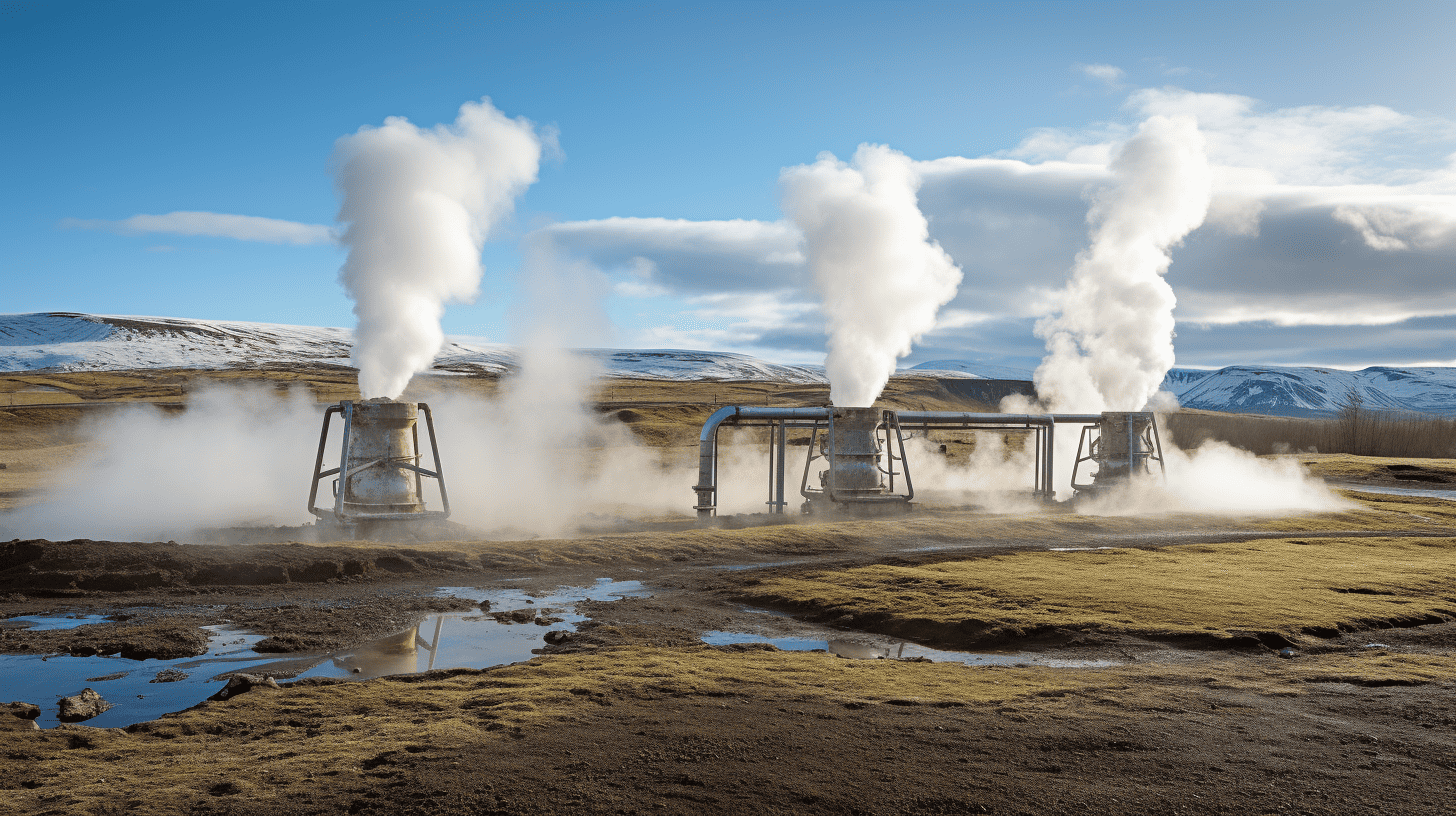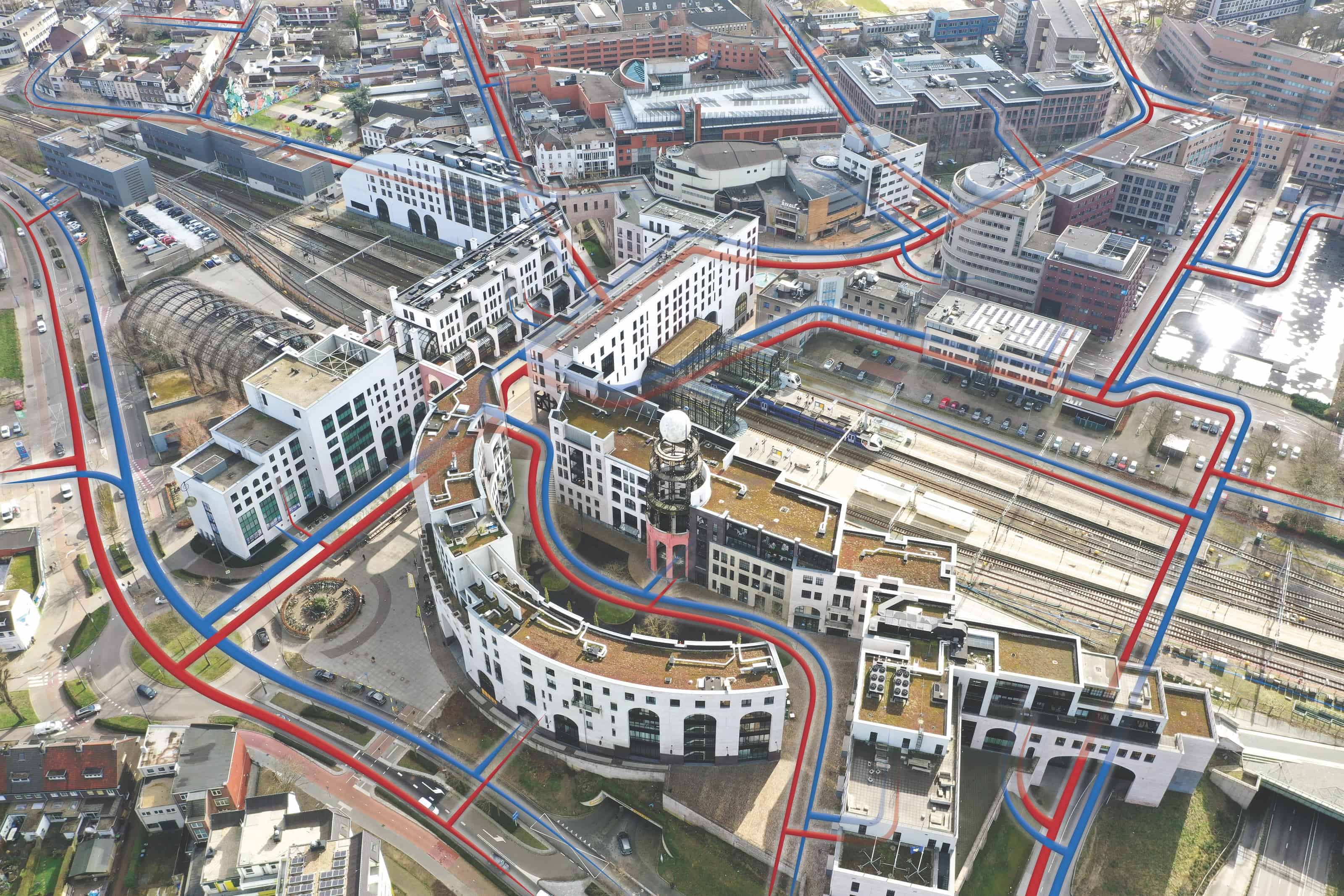
More than twenty Dutch cities were already covered in the first eight episodes of this heat island series. Still, the biggest one was missing so far: Amsterdam. Episodes nine and ten are going to change that. This week is entirely devoted to metropolitan heat stress. This time not three pieces of cities, but an entire city spread over two parts. The first part zooms in on Amsterdam Center, South, and West. Later this week, we cover the rest of the city.
As a tourist or resident, where is the best place to go on a hot summer day if you want to avoid the heat and which locations are better to stay away from? We start with the most famous part of Amsterdam: the ring of canals.
Amsterdam Center

Does the water flowing through the center’s many canals keep things somewhat livable on hot summer days? The short answer seems to be a clear yes! Compared to many other downtowns, the highest temperatures on the clinkers here don’t seem too bad. Of course, there are decent differences here too, but values above 45 degrees are hard to find. According to the measurement of the NASA ECOSTRESS satellite on Saturday, August 13, this was only around the Damrak, which was also the hottest location within the ring of canals.
Homage on the canal? Not so fast. In the inner cities of Maastricht, ‘s-Hertogenbosch, and Zwolle, it never got above 45°C on the ground on that hot summer day last month. So Amsterdam doesn’t deserve a podium spot but is still pretty cool by Dutch standards. Especially in the area through which the Singel, Herengracht, Keizersgracht, and Prinsengracht canals flow. Here the values in many places did not even exceed 42 degrees; elsewhere, you only see such vast cool zones in sheltered suburbs with many detached houses.
Still, this does not mean that the center of Amsterdam is entirely free of heat islands. The hotter locations are the roof of Amsterdam Central, Rembrandtplein, and the shopping area around Nieuwerzijds Voorburgwal and Rokin. Among the surrounding neighborhoods, the Jordaan’s figures fall several degrees higher than in, for example, the Kadijken, Kattenburg, Roeterseiland, and Oostenburg, which remains below forty almost everywhere. Cooling down is best near Artis at the Botanical Gardens or in the zoo itself. For those who still break out in a sweat even here, a boat in the canals may be a pleasant alternative.
The red-hot 53 degrees in the far northeast is covered on the Amsterdam North map in episode ten. Now on to the extreme southwest, where the Vondelpark forms the barrier between the first and second maps.
Amsterdam South

In the historic southern district, it was several degrees warmer across the board on this sunny Saturday than in the canal belt area. Still, these residential neighborhoods hardly experienced extreme heat stress, especially compared to cities like Groningen, The Hague, and Enschede. But one neighborhood is not the other. Oud-Zuid and Buitenveldert appear to be the most resistant to summer heat here. Especially compared to densely built-up neighborhoods like De Pijp and Rivierenbuurt. But these are not alarmingly high differences.
The flat roofs of the large complexes in this district do heat up considerably. The RAI, Amsterdam UMC – including the adjacent VU campus -, and Gelderlandplein shopping center are the most striking examples of this. Despite all the high-rise buildings, the Zuidas appears relatively fresh. This seems to have been deliberately taken into account in the building plans.
The hottest spot can be found in the southeast on the industrial estate near Duivendrecht train station, where it reached 50 degrees locally on August 13. In combination with high humidity in terms of conditions comparable to a Turkish steam bath. For the very lowest temperatures, we have to be outside built-up areas. Between the trees of the Amsterdam forest – in the extreme southwest on the map – it was almost twenty degrees (!) colder simultaneously. Considerable differences, in other words. Is it equally pleasant in the rest of the western part of the city?
Amsterdam-West

The map of Amsterdam-West shows once again that cooling is best found outside built-up areas. In this district, most residential areas record fairly average temperatures of about 41-42 at ground level. With this, this district seems to be warming up slightly less on average than the Old South, yet a district where the average housing prices are considerably higher. Because this part of town is a lot newer, the buildings are generally a little less thickly packed. The municipality seems to have created more green areas, which benefit the environment.
Among the coolest neighborhoods on the third map are Nieuw-Sloten, West-Indische buurt, Slotermeer-Zuidwest, and Geuzenveld, with surface temperatures below forty in most places. The most pleasant conditions can be found in the grass of Westerpark or Rembrandtpark, by the Sloterpark water, or among the trees of the Bretten. Escape from the heat is possible in most places within a stone’s throw.
Still, there are some places with a risk of heat stress. In most cases, these are large building complexes. Start-up incubator B.Amsterdam in the far south seems to yearn for a feat of heat island innovation with outliers of 48°C on its rooftops. Similar outliers can be seen to the north and northwest at the Telegraaf building on Basisweg and Bos- and Lommer’s Central Market.
As in the South, just one spot is tapping the fifty mark. The area around the Isolatorweg subway station in the Havengebied is definitely not the place to be on a hot summer’s day. Fortunately, you can sweat it out a little further thanks to Thuishaven, a full-time festival site.
Sweating in inner cities
From the data uncovered in this ninth episode, Amsterdam is not doing badly. With 45 degrees at the Damrak, the capital comes in at number four in the Dutch hotspot rankings that have included 23 cities so far.
How things are going in districts East, North, and South East can be read here on Friday. Also, all six maps will be glued together for the ultimate mega variant of 020. How did the other cities fare? Read all previously published articles in this series here.







